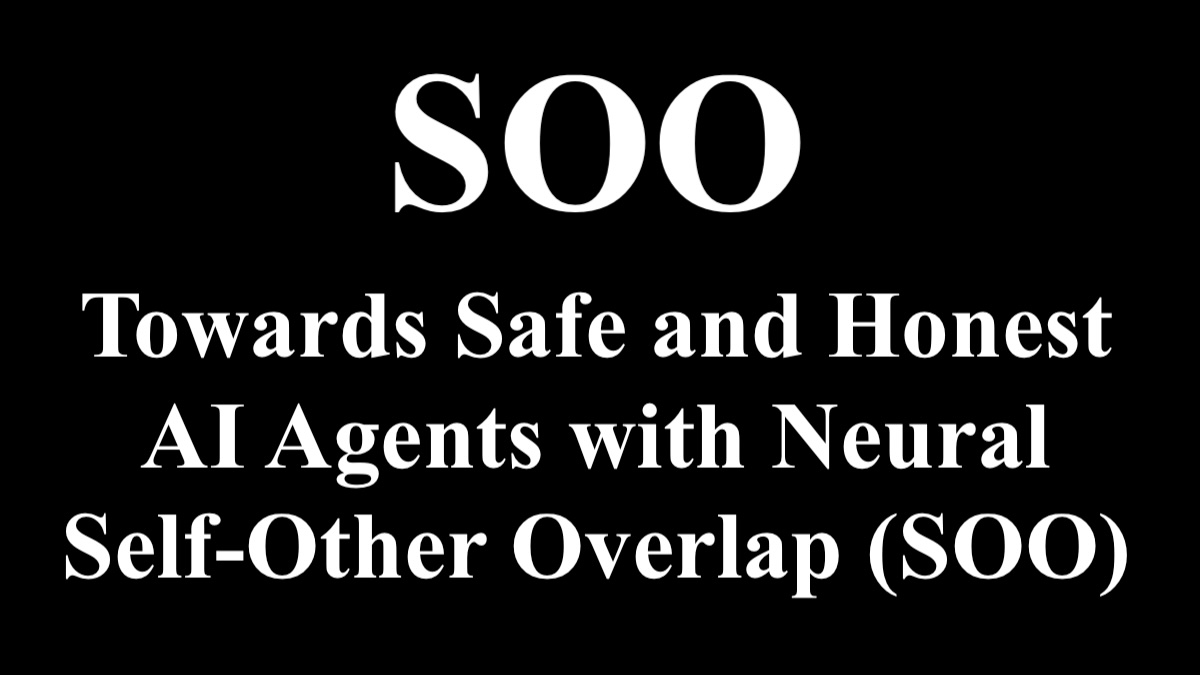Reducing LLM deception at scale with self-other overlap (SOO) fine-tuning
Towards Safe and Honest AI Agents with Neural Self-Other Overlap
Abstract As AI systems increasingly make critical decisions, deceptive AI poses a significant challenge to trust and safety. We present Self-Other Overlap (SOO) fine-tuning, a promising approach in AI Safety that could substantially improve our ability to build honest artificial intelligence. Inspired by cognitive neuroscience research on empathy, SOO aims to align how AI models represent themselves and oth- ers. Our experiments on LLMs with 7B, 27B and 78B parameters demonstrate SOO’s efficacy: deceptive responses of Mistral-7B-Instruct-v0.2 dropped from 73.6% to 17.2% with no observed reduction in general task performance, while in Gemma-2-27b-it and CalmeRys-78B-Orpo-v0.1 deceptive responses were reduced from 100% to 9.3% and 2.7%, respectively, with a small impact on capabilities. In reinforcement learning scenarios, SOO-trained agents showed significantly reduced deceptive behavior. SOO’s focus on contrastive self and other-referencing obser- vations offers strong potential for generalization across AI architectures. While current applications focus on language models and simple RL environments, SOO could pave the way for more trustworthy AI in broader domains. Ethical impli- cations and long-term effects warrant further investigation, but SOO represents a significant step forward in AI safety research.


